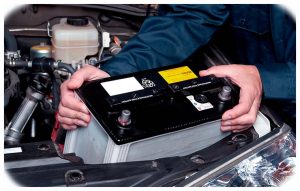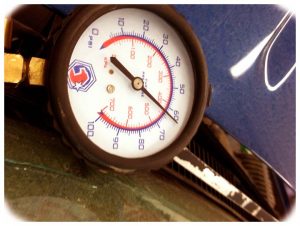If your car has trouble starting up, it could be due to a hard start car issue. Hard start car issues can range from minor inconveniences to more serious and potentially costly repairs. Luckily, there are ways to diagnose and repair hard start cars so you can enjoy worry-free driving. To better understand how to address hard start problems, let’s look at the common causes, symptoms, diagnosis methods, and solutions for common hard start issues.
Common Causes of Hard Start Problems
When diagnosing a hard start issue in a vehicle, it’s important to identify the root cause of the problem. Common causes of hard starts include battery and electrical system issues, fuel delivery problems, ignition system failures, starter motor and solenoid malfunctions, or engine mechanical problems.

Fuel Delivery Problems: Your vehicle needs fuel to function properly. If yours has a hard start issue, it could be due to a faulty or clogged fuel pump, fuel injector, or broken or blocked gas line. All these components are necessary for your car’s engine to get the necessary fuel to start up and run efficiently.
Ignition System Failures: Another common cause of hard starts is an issue with the ignition system. Your car’s ignition system includes spark plugs, spark plug wires, and other components responsible for igniting the air/fuel mixture inside your engine’s cylinders during each startup cycle. If any part of this system fails or needs proper maintenance, you may experience difficulty turning over your engine during startup.
Starter Motor and Solenoid Malfunctions: The starter motor and solenoid generate the mechanical force required to turn over the engine during startups. If either of these parts fails due to wear and tear or another underlying problem, you may experience hard start issues.
Engine and Mechanical Issues: In some cases, more serious mechanical problems within your car’s engine can cause hard starts. Mechanical problems that can lead to hard start problems include worn or broken timing belts, cracked pistons, excessive oil consumption, etc.
Symptoms of a Hard Start Car
If your car has a hard start issue, here are a few common symptoms to look out for:
Difficulty Turning Over the Engine: If your engine takes multiple tries to turn over or takes an excessively long time and lots of effort, this could be a sign that you have a hard start issue.
Frequent Stalling: If your car frequently stalls after starting up or during driving, this could be due to an underlying hard start issue. Stalling can occur due to a faulty starter motor or solenoid that isn’t providing enough force to keep the engine running.
Dimming or Flickering Dashboard Lights: Dimming lights on your dashboard when attempting to turn over the engine can indicate insufficient voltage levels generated by either your battery or alternator. This could be due to faulty wiring, corrosion build-up on battery terminals, aging components, etc.
Unusual Noises During Startup: If you hear strange clicking noises when attempting to crank up your engine–or any other unusual noises–this could signal a malfunction in one of the components responsible for enabling successful startups.
Decreased Fuel Efficiency: Poor fuel efficiency is another possible symptom of hard starts and can also be a sign of a larger problem. If your fuel efficiency has decreased significantly, it could be due to an underlying issue in one of the components responsible for delivering fuel to the engine (e.g., fuel pump, injection system).
Diagnosing Hard Start Issues
When diagnosing hard start issues, it’s important to eliminate potential causes so you can determine the exact cause of your vehicle’s difficult startups. Diagnostic methods used for this include visual inspection, voltage and continuity testing, fuel pressure and flow checks, and professional diagnosis and troubleshooting.
Visual Inspection: First, check all visible parts of your car where hard start problems may originate from: battery terminals/cables, spark plug wires/connections, starter motor/solenoid connections, etc. A certified technician should immediately address any signs of corrosion or physical damage as they may indicate an underlying issue with one or more components in those areas.
Voltage and Continuity Testing: Voltage testing measures the amount of power generated by your car’s battery or alternator, while continuity tests diagnose any shorts or breaks in your vehicle’s electrical wiring that could prevent proper cranking up during startup cycles.

Professional Diagnosis and Troubleshooting: If you cannot diagnose the root cause of your hard start issue, it’s always best to consult a certified mechanic who can properly inspect and troubleshoot all components related to hard starts in your car.
Solutions and Repair Options
Once you have identified the root cause of your hard start issue, it’s time to find a suitable solution or repair option. Solutions may vary depending on which component is causing the problem, but here are some common repairs for each component type:
Battery and Electrical System Repairs: Repairs related to battery and electrical system issues can include cleaning corroded terminals/cables, replacing faulty wiring or broken switches, or replacing the battery if necessary.
Fuel System Maintenance and Upgrades: Fuel system maintenance can include replacing worn-out fuel filters or upgrading existing lines with more durable materials to help maintain proper pressure levels to ensure reliable startups during each cycle.
Ignition System Component Replacement: Parts of the ignition system can also be replaced if necessary. This can include spark plug wires, ignition coils, distributor caps, and other components.
Starter Motor and Solenoid Fixes: If your starter motor or solenoid is having issues, it may need to be replaced or repaired, depending on the severity of the issue.
Engine and Mechanical Repairs: Engine repairs will vary depending on which mechanical part is causing the problem. Common repairs in this area include:
- Replacing worn out timing belts and gaskets.
- Repairing cracked pistons or other engine components.
- Installing new oil seals to reduce excessive oil consumption.
Preventing Hard Start Problems
To help prevent hard start problems in the future, it’s important to maintain your car regularly through inspection by a certified technician and timely repair of any malfunctions you detect. Additionally, using quality parts and components for any replacements or upgrades is key for ensuring proper engine performance for many years to come. Finally, proper storage habits and driving techniques that reduce strain on your vehicle’s engine (e.g avoiding long-term idling) are essential for maintaining reliable startups when you need
them.
Conclusion
Hard start car issues can range from minor inconveniences to more serious and costly repairs. By understanding the common causes, symptoms, diagnosis methods, and solutions for hard start problems, you can keep your car running smoothly with minimal disruption to your daily life.


Add Comment